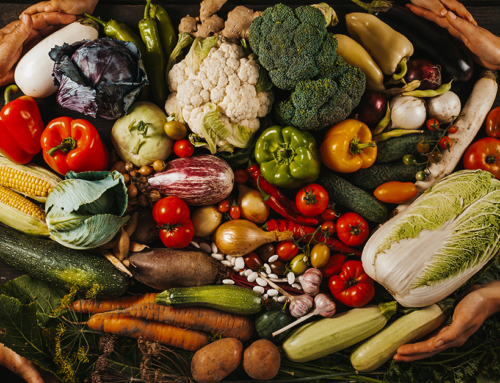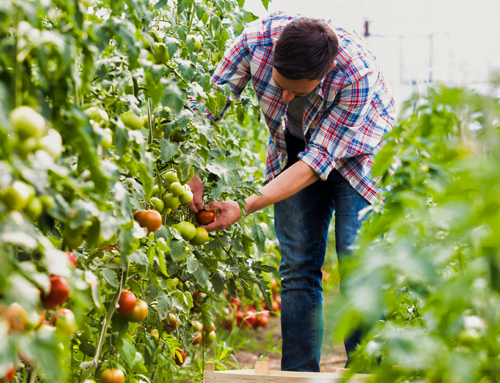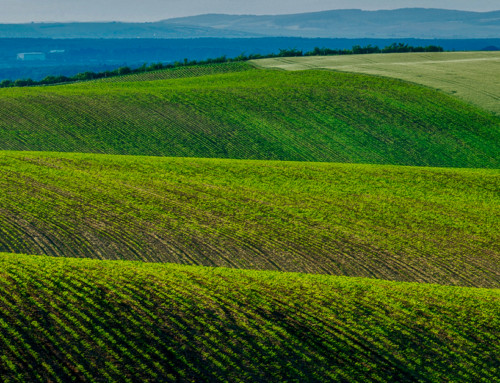Vermicompost derives from the Latin word vermi for worm, as it is essentially worm castings. During this biological process, earthworms are used to transform organic waste into a nutrient-rich soil that acts as a slow-release organic fertilizer. It is a great sustainable alternative to use as fertilizer and a fantastic way to promote sustainable agriculture in local farming.
At the farm, I was taken through the entire production. It was inspiring to learn about yet another creative approach to organic farming. Seeing that farmers in the US are willing and able to adapt to worldly sustainable practices in order to protect our biodiversity motivated me to reach a wider public in advocating for sustainable agriculture.
Benefits of vermicompost
Vermicompost has a plethora of benefits, most importantly as follows: (1) it acts as biofertilizers, restores soil nutrients, stabilizes soil, and enhances soil fertility at a long-term period; (2) it attends to social issues and recycles waste; and (3) it is shown to be a profitable enterprise as a circular economy.
Soil biological properties
The earthworms, acting as eco-biological engineers, change the properties of soil that has previously been contaminated with pesticides and reclaim it producing microbial enrichments and nutrients. Vermiculture heavily influences nutrient cycling and increases resistance to fungal disease and crop pathogens.
Through the long-term use of vermicompost, soil fertility is enhanced and there is a significant reduction to the use and dependency of harmful chemicals. Even though vermicompost’s nutritional value may vary depending on the organic waste that is used, its nutritional profile is overall higher when compared to traditional compost.
Social and environmental protection
Around 820 million people in the world today are malnourished due to the inaccessibility to nutritious food. Millions of other people in developing countries suffer from acute poisoning due to the use of chemical fertilizers, many of whom die as a result. Consequently, it is imperative to eradicate the excessive use of chemical fertilizers in food production.
Vermicomposting contributes to many environmental benefits, including waste recycling. Each year, with the increment in human population and consumerism, urban areas produce approximately 1.3 billion tons of waste and, by 2025, it is predicted to be at the rate of 2.200 billion tons per year. The production of vermicompost allocates and repurposes most of these wastes, as earthworms feed on (vermi-meal) industrial, urban, domestic, agricultural, animal, paper and solid waste, and even wastewater.
Profitability
Vermicompost can be just as profitable for both the manufacturer as it is to the consumer, in addition to promoting social responsibility. This compost has proven to have a better benefit-cost ratio along better net profits, with a feasible financial viability. It can also increase technical efficiency and productivity in farming, as well as an enhanced plant growth. Vermiculture also reduces and eventually eradicates the need of chemical fertilizers which, in Turkey’s case, continue to increase in cost. As the global demand for chemical fertilizers has increased, so has its prices all around the world.
How it works
This procedure has been globally accepted by farmers and studied by researchers in different parts of the world, such as in Turkey, India, Serbia, Fiji, and other countries alike.
Preparation, maintenance, and finish
Source: Greta Hoffman
There are about eight to ten species of earthworms, out of the over 300 that exist, suitable for vermicomposting. These are divided in three categories: endogeic, epigeic, and anecic. The epigeic are the ideal species for vermiculture as they are litter dwellers that multiply and break down organic material rapidly. Vermiculture requires about 1000 to 1500 earthworms to process about 30 to 40 kg (approximately 66 to 88 lb) of material, and a mature worm can reproduce resulting in an estimate of 1200 to 1500 earthworms per year.
Different tools and methods are used throughout the procedure, from its cultivation to its extraction. Most commonly, the bedding is placed in bin-like containers. The bedding and vermi-meal (as previously listed) may vary depending on the crops, available resources, and geographical location.
It is essential that the site area is kept shady, moist, and properly ventilated, which is why an open shed is recommended. There should be proper drainage and a temperature of 20°C to 30°C should be kept.
Overall, it takes the earthworms around 45 to 60 days after first releasing them in beds, for the vermicompost to be ready. The soil extraction involves sieving in order to separate the earthworms and leftover scraps. These can then be deposited in a fresh bed to start the process anew.
Future research and policy suggestions
There is a significant wide amount of knowledge gaps within the process of vermicomposting, such as whether or not the composition of vermicompost contains toxic substrates, the levels of GHG emissions that earthworm activity generates, among others. Future research is essential to better understand vermiculture and its properties. There is also a demand for a more comprehensive awareness of vermicomposting within the farming community; for example, through the use of mass media and/or extended agricultural services.
Furthermore, there is a precedent that calls for engineers to design and develop the technology and mechanisms required for the production of vermicompost. This goes alongside the need for policy measures to incentivize the practice of vermicomposting as well as research and development programs that promote it. For instance, the Riverm Ltd. Company in Turkey has developed their own machinery for automated vermicomposting systems, which has been officially certified and widely used for years in Turkey. However, it is a costly system and engineering research is continuously being conducted to reduce their prices. This same initiative needs to be considered globally at a more holistic approach to create a more abundant amount of innovative vermicomposting systems more easily accessible to farmers everywhere.
Below, there are some other articles that you might be interested in:
- Benefits of fungi for the environment and humans
- Can conventional farming practices feed the world?
- Biochar: understanding its use and benefits
About the author

Julieanne M. Viana is a Chloride Free Volunteer and a passionate advocate for sustainable development and environmental policies, initiatives, and strategies. Her interests include foreign policy, research, and European politics, as she aspires to dive into the field of diplomacy in correlation with sustainability.
Julieanne completed a Master of Science in Sustainability Science, Policy, and Society from Maastricht University in the Netherlands. She also has a Bachelor of Arts from Florida International University in Miami, Florida. Here, she double majored in International Relations and Sustainability and the Environment, and obtained certificates in European and Eurasian Studies, National Security Studies, and Environmental Studies. Julieanne was born and raised in Puerto Rico and is proud of her roots to the island.
In her free time, Julieanne enjoys cooking, photography, skateboarding, and reading. She also loves spending time with family and friends.






Leave A Comment